Larger fungi are much easier to spot than the tiny ones in my previous post. Or are they? Often the same colour as the surroundings or covered with needles and leaves they can be well hidden.
Found on a high point in Warranwood Reserve, Chlorophyllum brunneum has the common name Shaggy Parasol. It is an introduced species.
Found very near the one above this is a quite different mushroom. The two distinguishing features are the chocolate brown lamellae and the annulus on the stipe. I am sure it is one of the Agaricus which includes the common field mushroom but many species are inedible. Maybe it is Agaricus subrutilescens.
This dense cluster was spread right along the soil disturbed by the building of a new paling fence. It might be the ugly milk cap Lactarius plumbeus.
These on the other hand might be Lactarius deliciosus. They were in a fenced treed field so I could not get very close. One thing I could check once I zoomed in on the photo is that they are gilled.
Armillaria hinnulea is related to the damaging Honey Fungi and only found in Australia and New Zealand. It is a secondary pathogen causing disease only after the host has been damaged by another pathogen. I think this is the identity of these gilled mushrooms clustered around the base of a dead eucalyptus that had me stumped because they are so dark in colour.
Non-gilled fungi
Having read about these boletes as I have been doing my research I was rather excited to find these fine specimens in a grassy area beside a rural road. Unlike gilled fungi the surface under the pileus has pores for liberating the spores. The Phlebopus marginatus can grow to more than a metre in size, these ones were pretty big and heavy.
There are a lot of pine trees at the entrance to Colman Park in South Warrandyte. This is on a ridge that must be the highest in the area because there is a telecommunications tower nearby. The pines are probably from windbreaks planted years ago. Here I found some other boletes. This time Suillus granulatus. The individual photo is of a fresher specimen found further down the road. The glutinous pileus is more obvious, it was quite greasy to the touch. They are not the Slippery Jack Suillus luteus because there is no annulus on the stipe. Both species are associated with introduced pines.
By identifying these I think it has solved a mystery find from a week ago.
I had seen them the day before from across the road outside the school, glistening in the sunlight. When I went back the next day they were dried out. While it is hard to see in the photo they are on a raised bank, a pine windbreak used to be in this area. I now think they must be one of the Suillus species. I could not see any stipe, but that does not mean wasn’t one as I did not disturb them.
Also on a bank rising up from a roadway is this interesting find. The wooly surface of the pileus made it an easy one to identify. Phaeolus schweinitzii is pathogen that grows on the root and is associated with the death of mature conifers.
This is Grifola colensoi, a rather attractive polypore fungi with furry grey lobes called pilei and white pored under surface. It grows on decaying wood at the base of Eucalyptus trees, which is exactly where I found it in another local reserve where dead trees are allowed to stand.
The next post features some bracket fungi, earth balls and some really amazing finds.



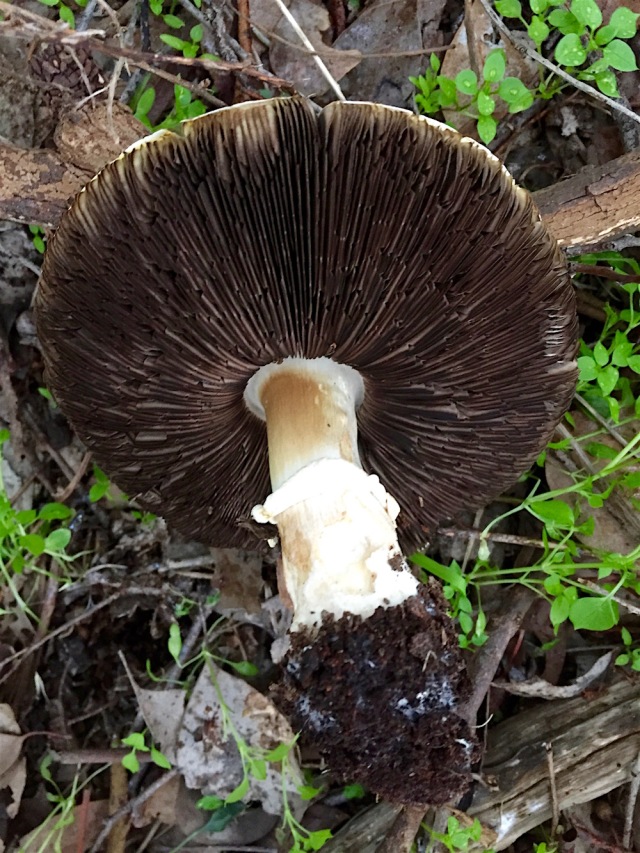




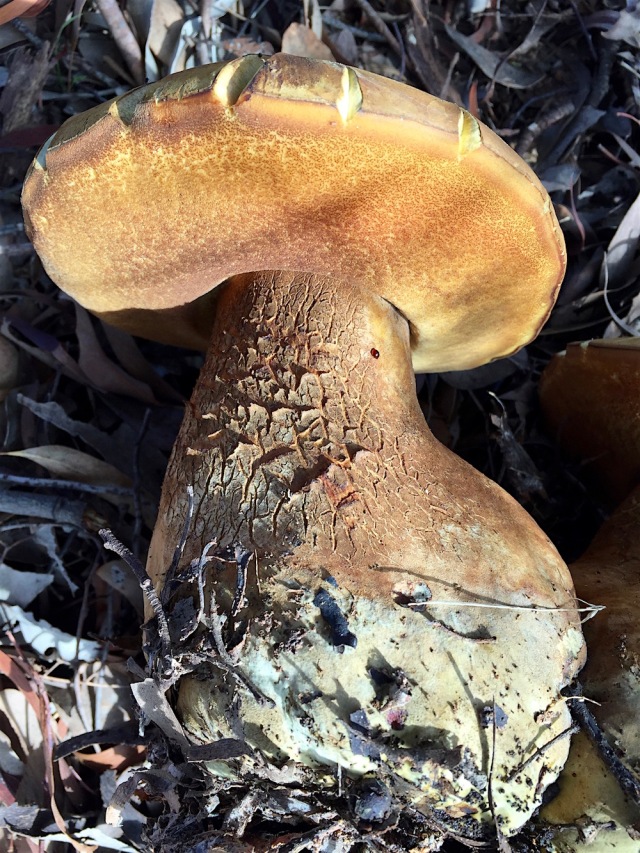

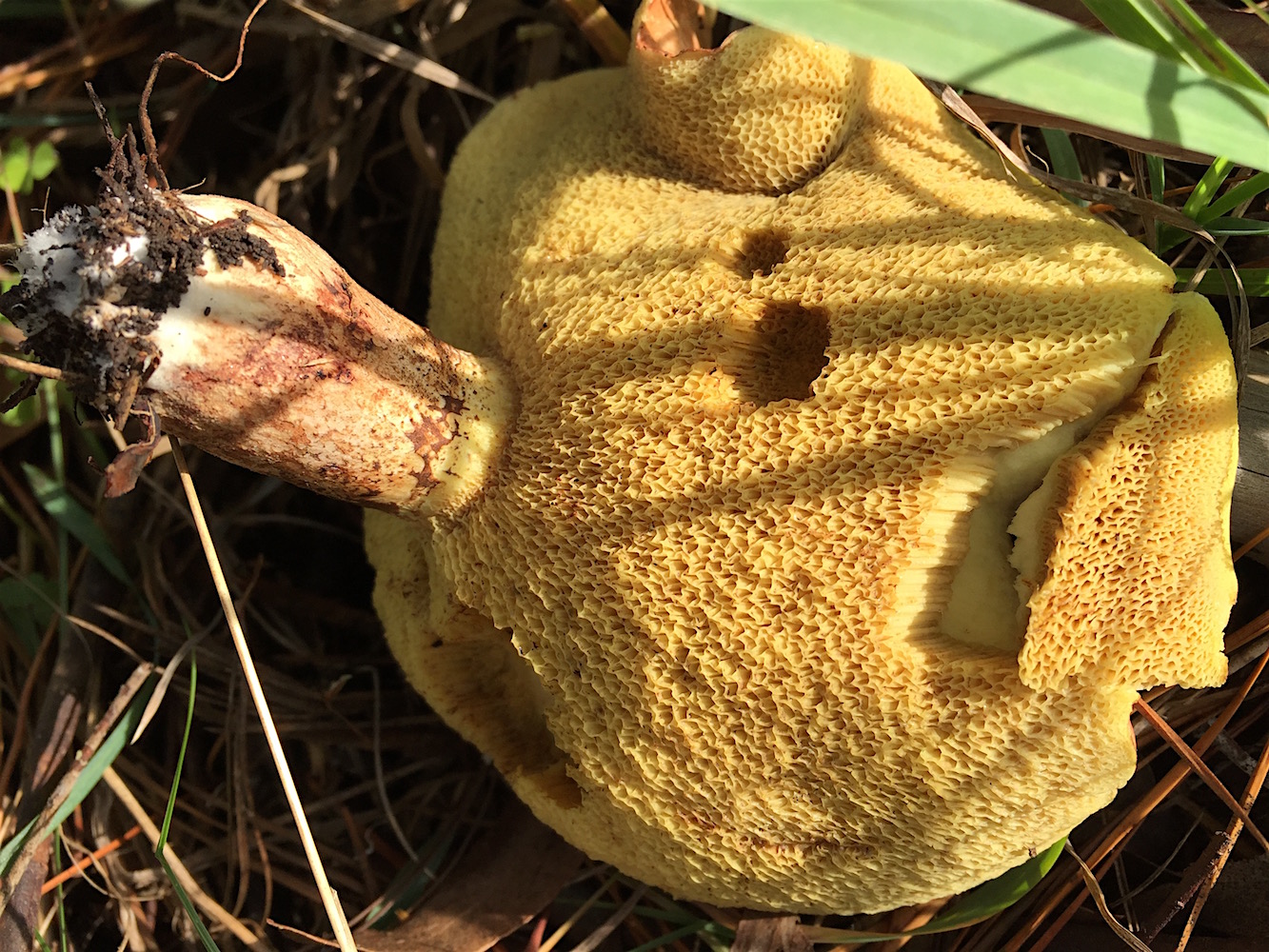
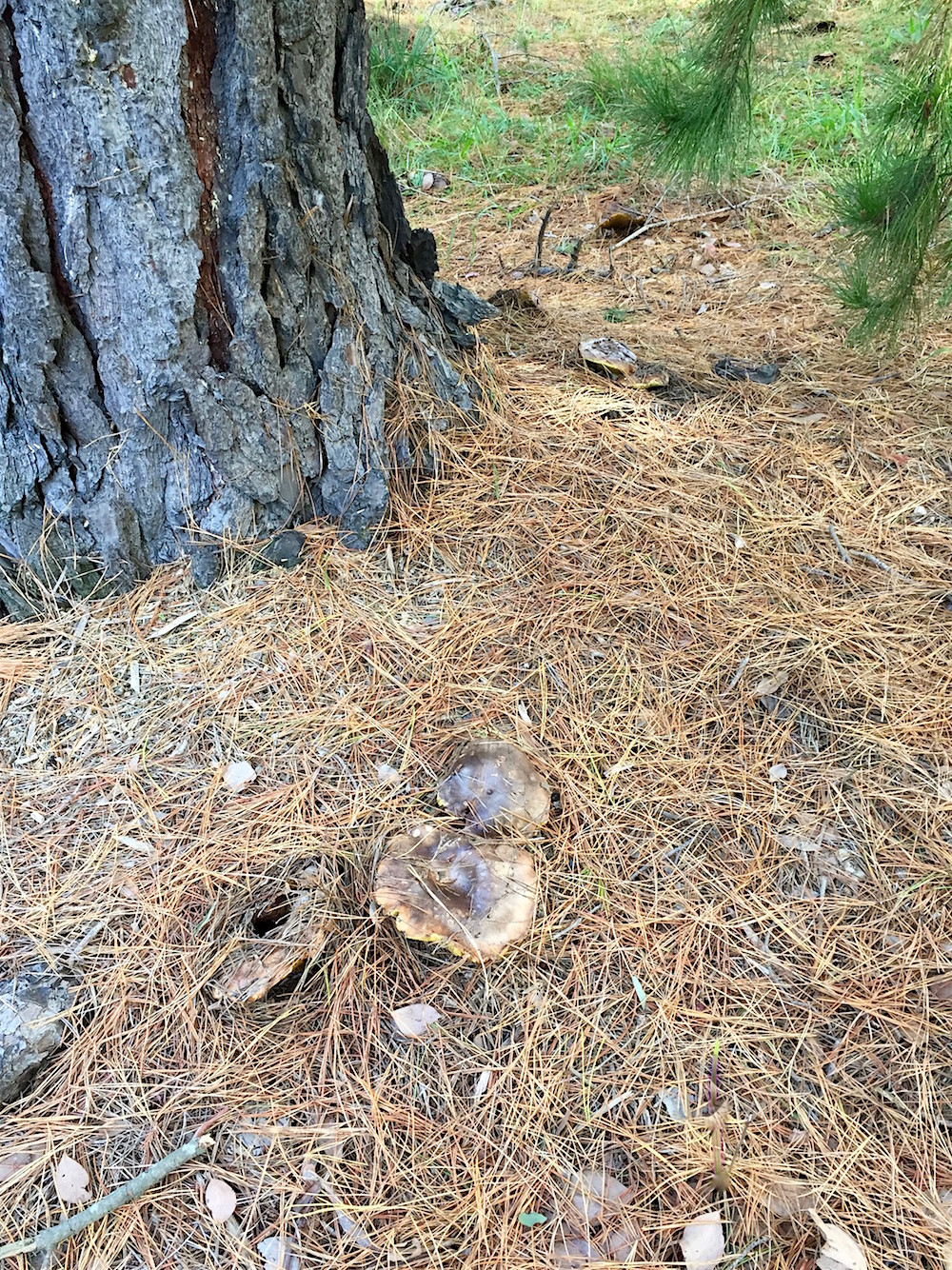
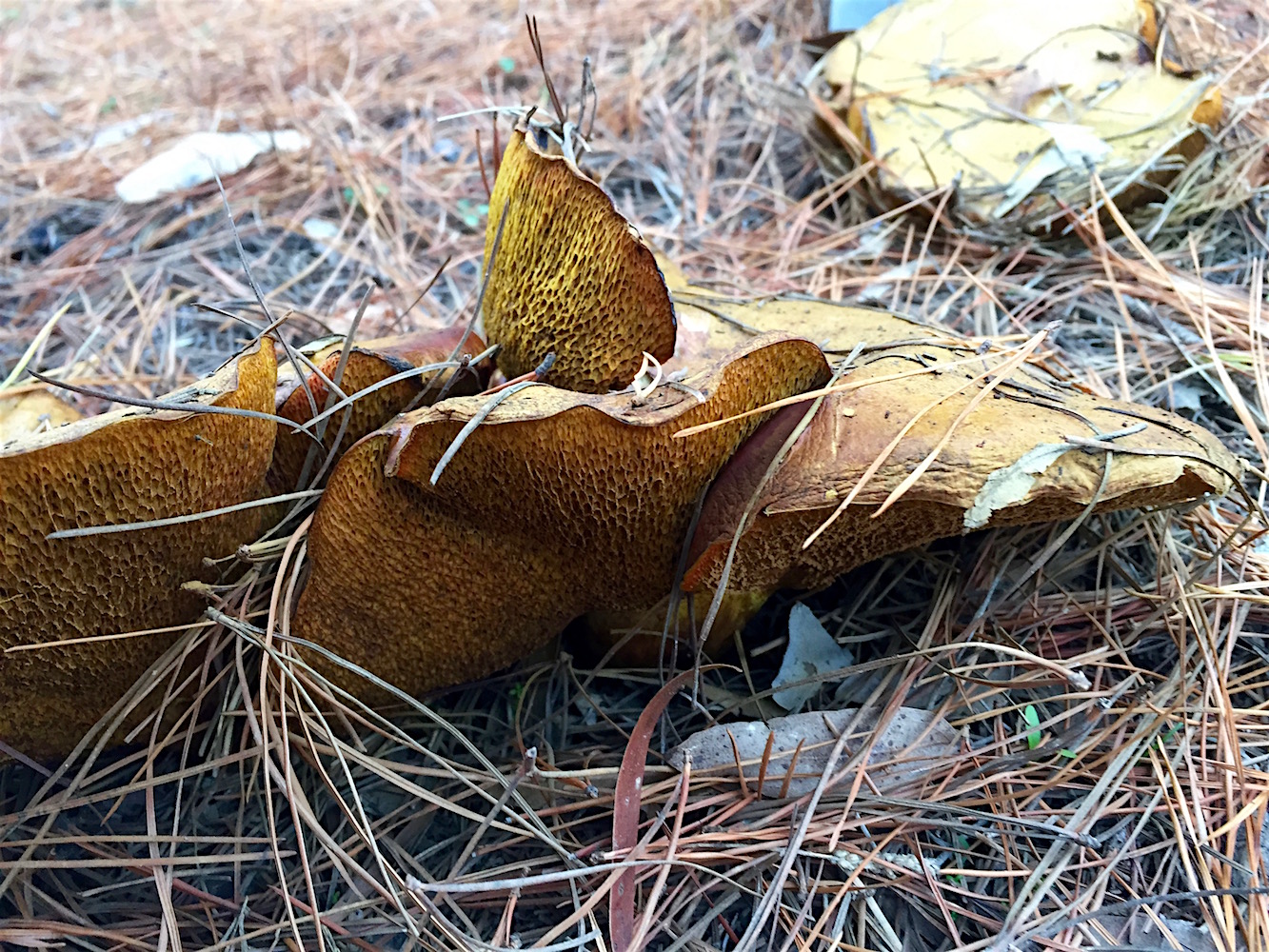


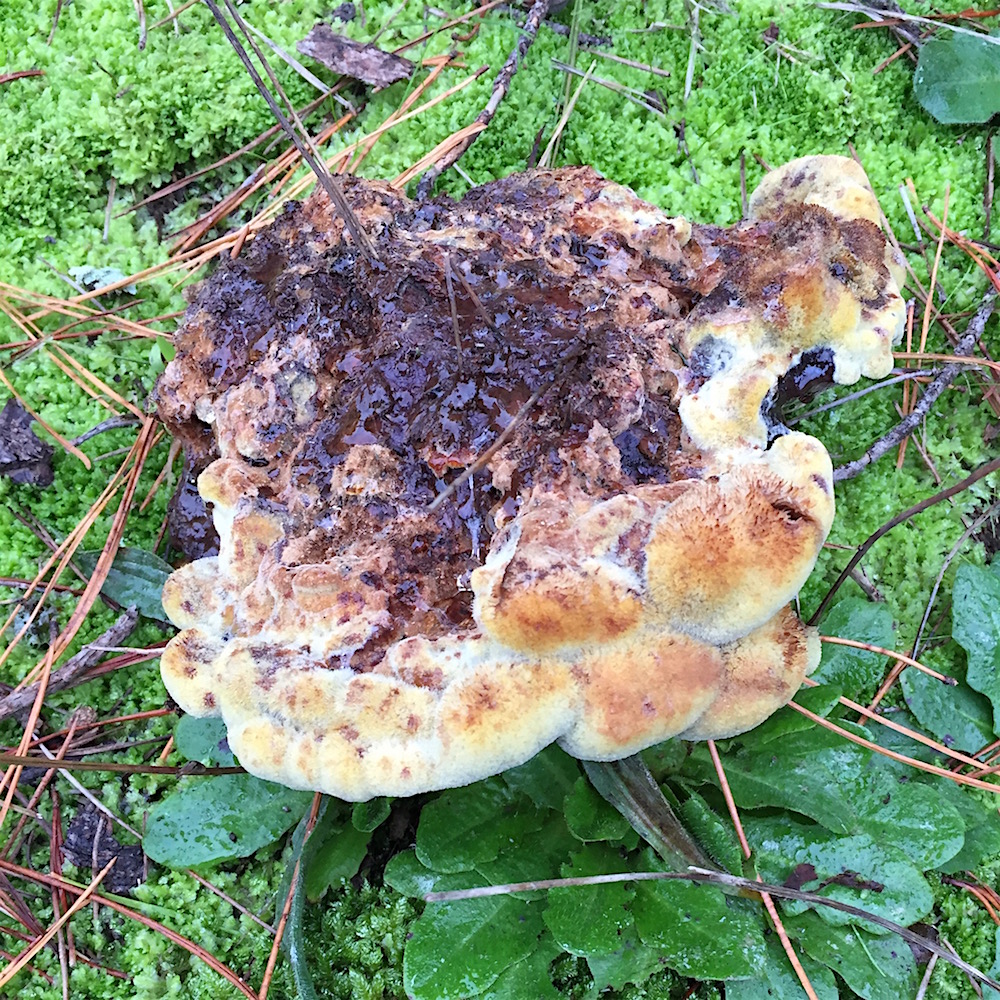

Despite being unattractive, the fungi are quite beautiful and interesting.
Great collection! It really is peak fungi time at the moment. I admire your familiarity with the various technical terms for the fungi elements. I shall endeavour to emulate it!